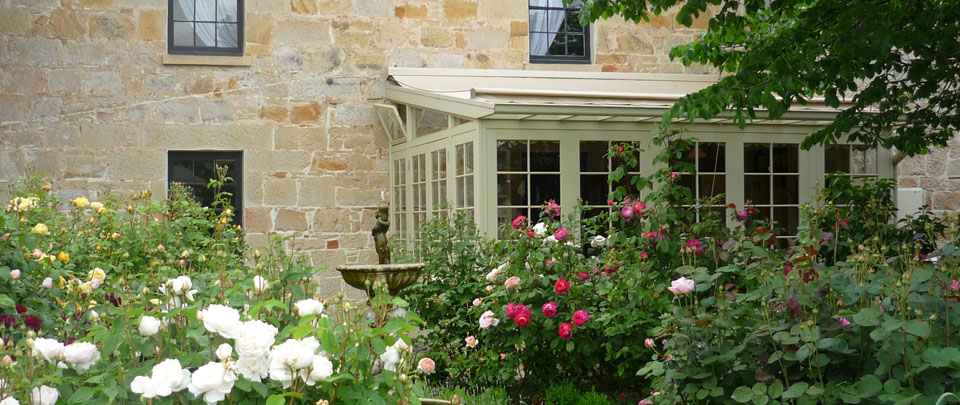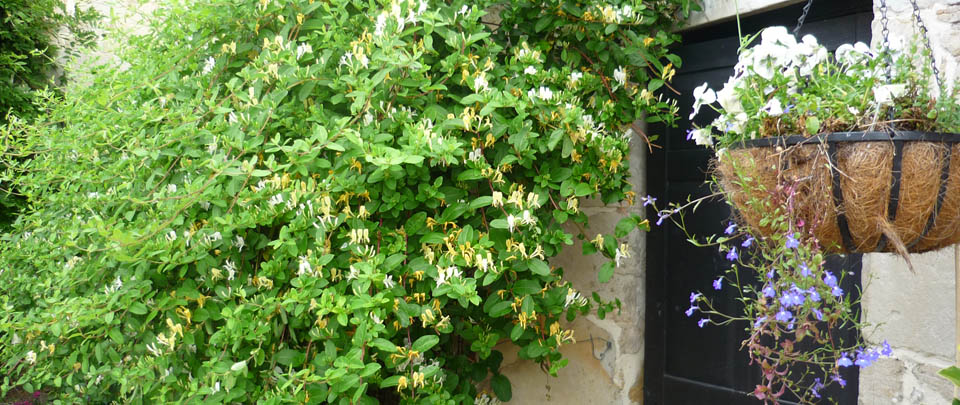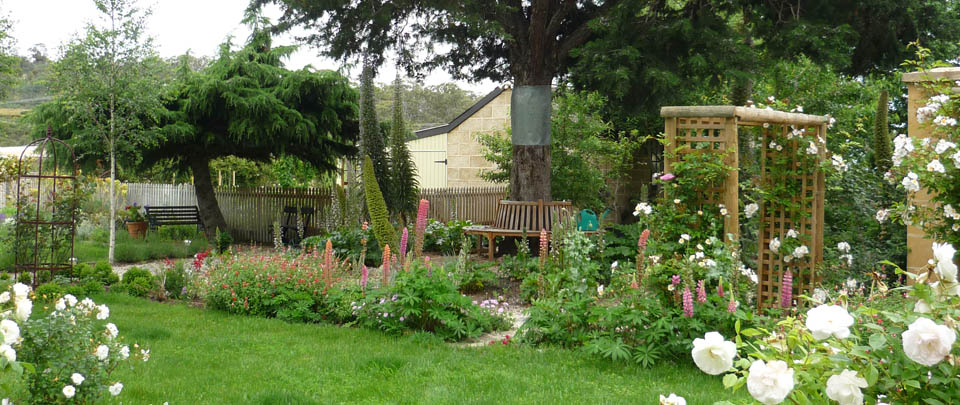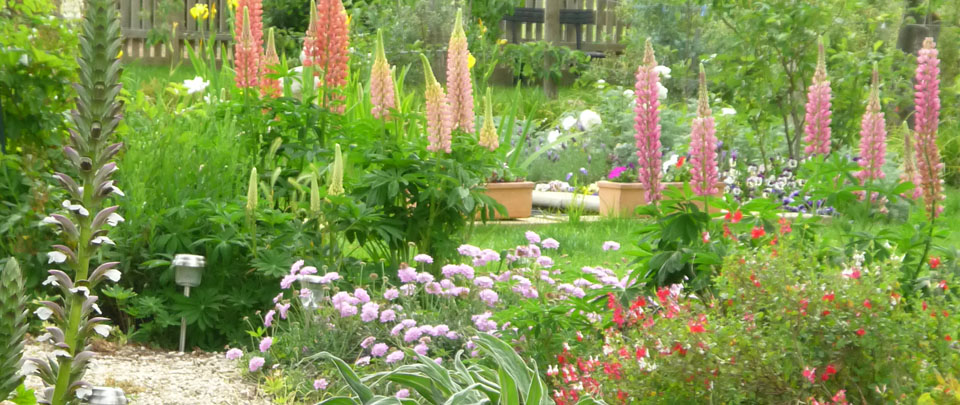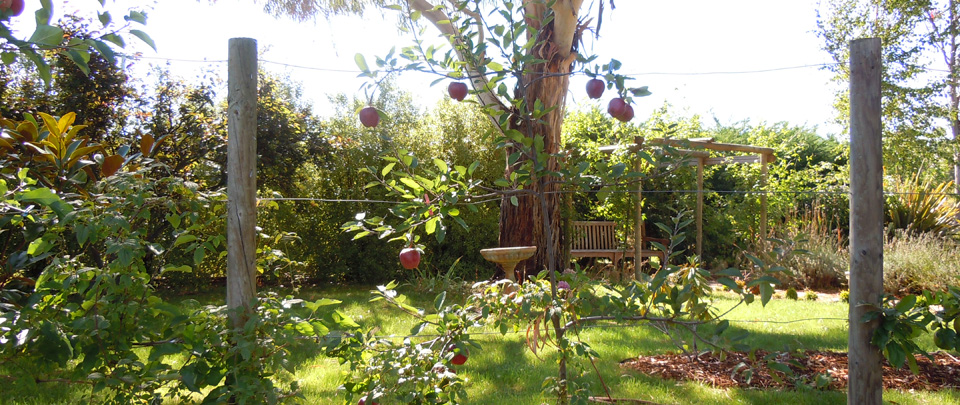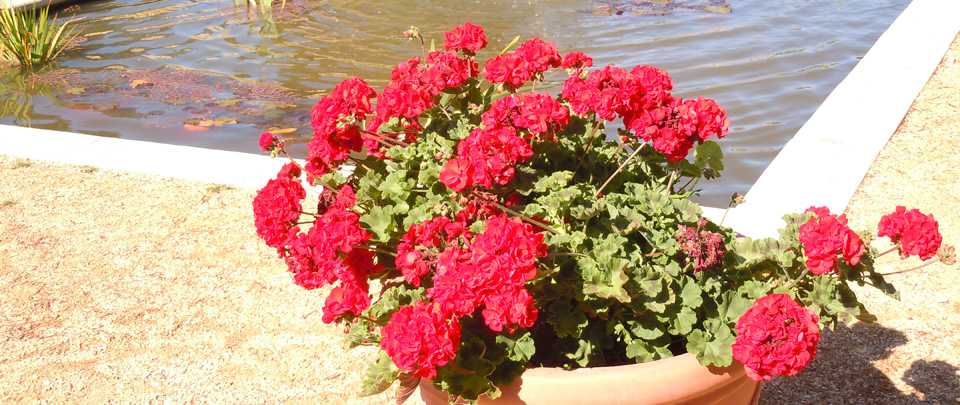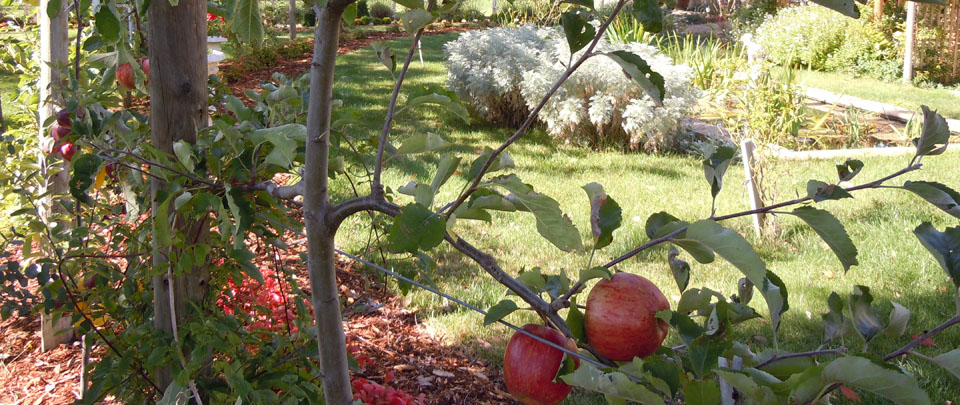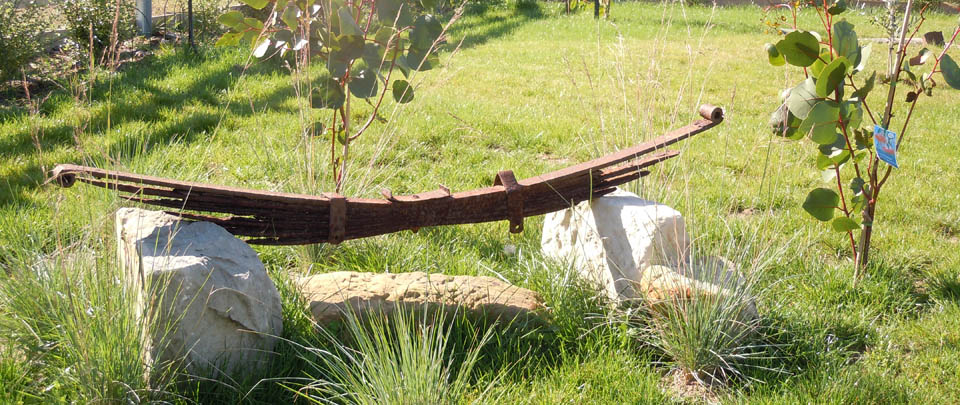The garden at Epsom is blessed with many established trees which we inherited – elms, cypress, cedar, eucalypts and a wonderful flowering cherry. Jacqui designed the garden as a series of “rooms” to wander through, with formal gardens close to the house, giving way to a more relaxed native garden towards the river.
Our main rose gardens are at the front of the house. On the east side, David Austin roses bloom in a buxus-fringed parterre focussed on a central fountain and overlooked by the conservatory breakfast room. The west side rose bed includes “Hot Cocoa” roses to fill vases matching the ballroom walls.
The sunny courtyard, filled with flowers in hanging baskets and cascading from wine barrels retired from vintage duties, is a perfect place for an afternoon glass of wine.
Behind the rear courtyard is a rose-covered walk which leads to a semi-circular lawn centred on a lily-pond and “walled” with espaliered apples.
The silver birch avenue which leads to the laburnum arbor set against the pittosporum boundary “wall” is bordered with buxus and lavender. On one side is a half-size croquet lawn, on the other a mini-forest of European trees and eucalypts underplanted with spring bulbs and rhododendrons.
The small orchard of almonds, apricots, peaches and nectarines between the house and the potager garden is also contained in a parterre. Against the house-wall in this area is an aged grape-vine, which we’ve nursed back to health. Our viticulturalist friends have been unable to identify it beyond being certain that it isn’t modern. It may even be the vine which appears in an 1870’s photo of the house – another piece of the Epsom puzzle for future investigation.
The picket-fenced potager garden is Jacqui’s delight. The herb wheel is bordered by thumb-printed convict bricks and segmented with blackened timbers from the ceiling of the burnt-out bakery. Raised beds set into gravel paths grow a cornucopia of fruits and vegetables - including gooseberries, raspberries, strawberries, blueberries, passionfruit, rhubarbs and seasonal vegetables.
Bedding plants include lupins, peonies, dahlias, salvia, sunflowers, delphiniums, sedums, agastache, kniphofias, echinops, eryngium, towering echium and other unusual plants
We took the opportunity in 2010 to add to the gardens by buying back some of the original Epsom land grant. This land has been developed into an Italianate garden with a wisteria walk, summer house and water lily pond, leading through to a native area with eucalypts, acacias, ornamental grasses and its own natural rockpool, fondly dubbed Dogwash Pond because Toby, our golden retriever, loves to cavort in it.
Another recent development, in the rear west corner of the garden, is a zen-like spot for contemplation which we call Thyme Square, a chequerboard grid of paving stones and thymus alba surrounding a central pendulous elm with standard crab apples set in gravel on the four corners. It’s best viewed from the arbor-seat covered in Wedding Day climbing roses.
The garden at Epsom hasn’t been designed to peak at a particular point in the year, as with some English gardens. Rather we have planted borders for year-round interest so whenever you come there is always something to enjoy.



